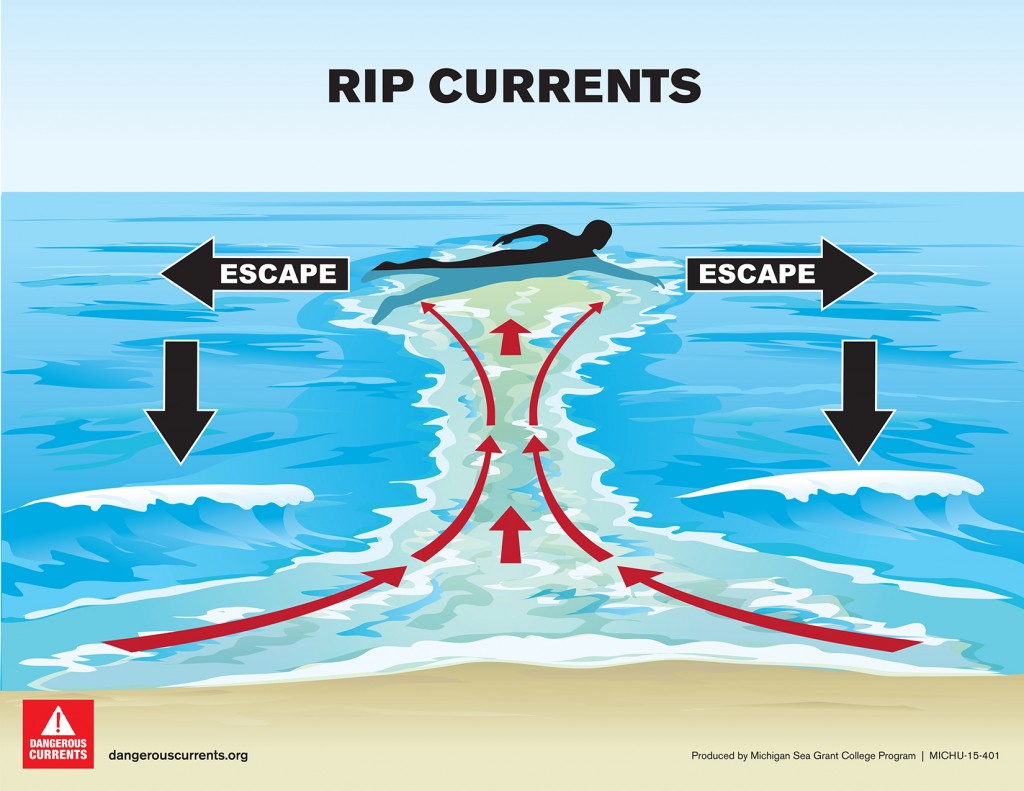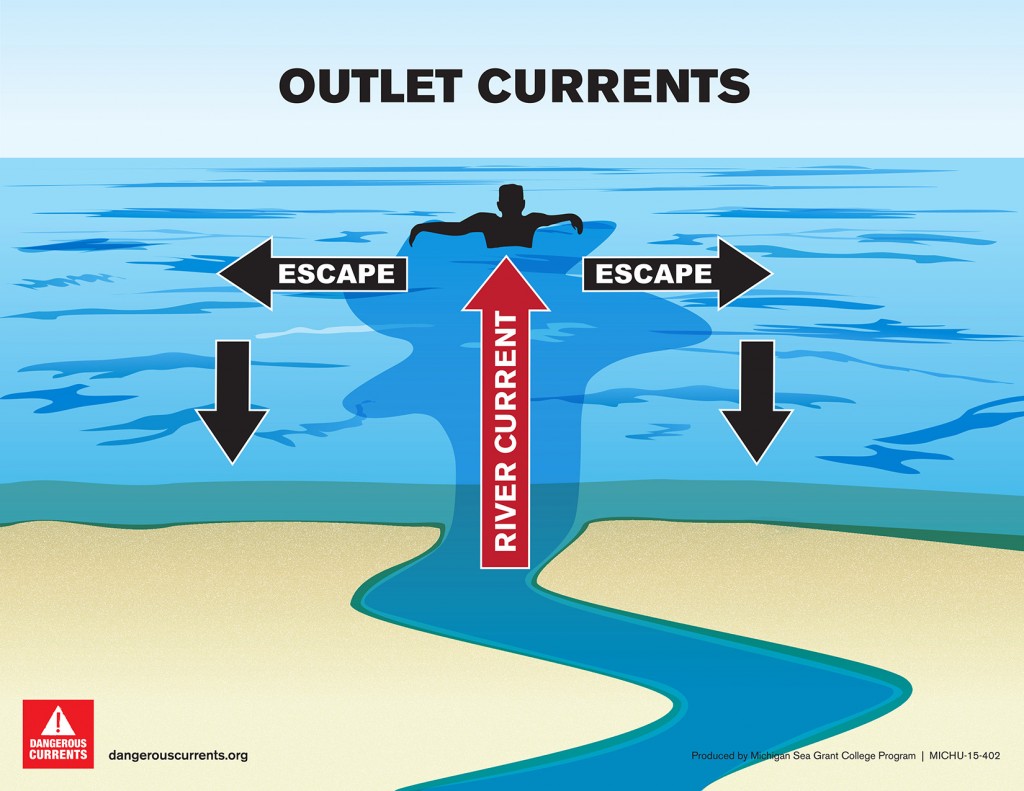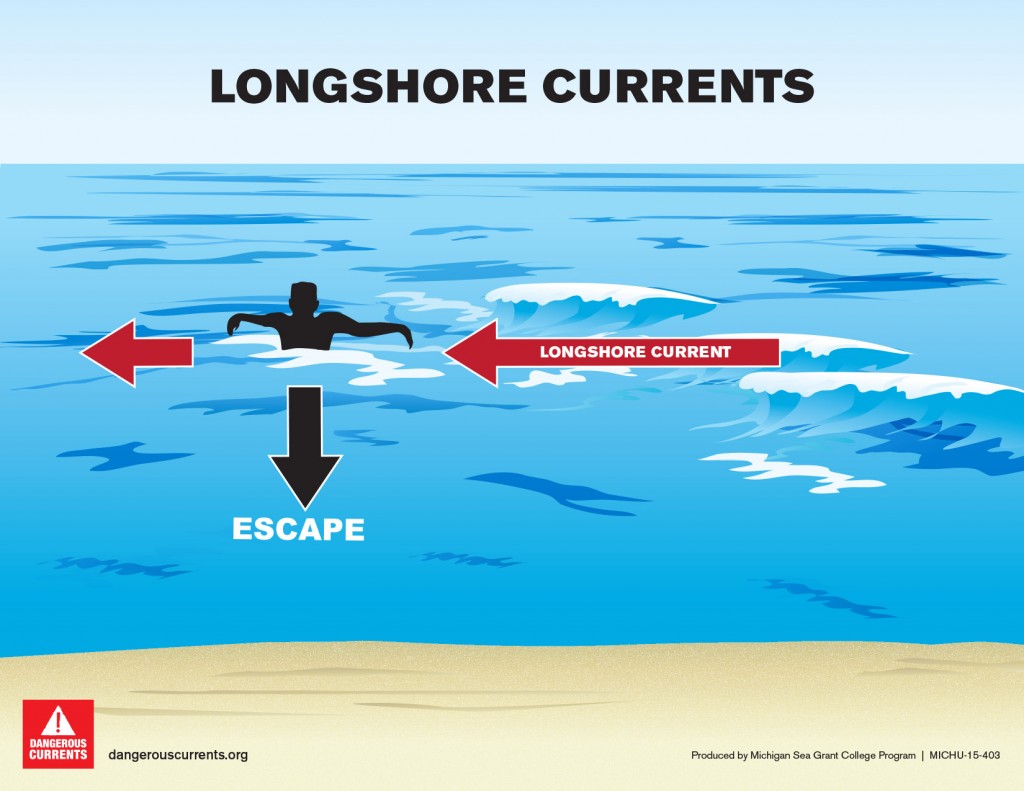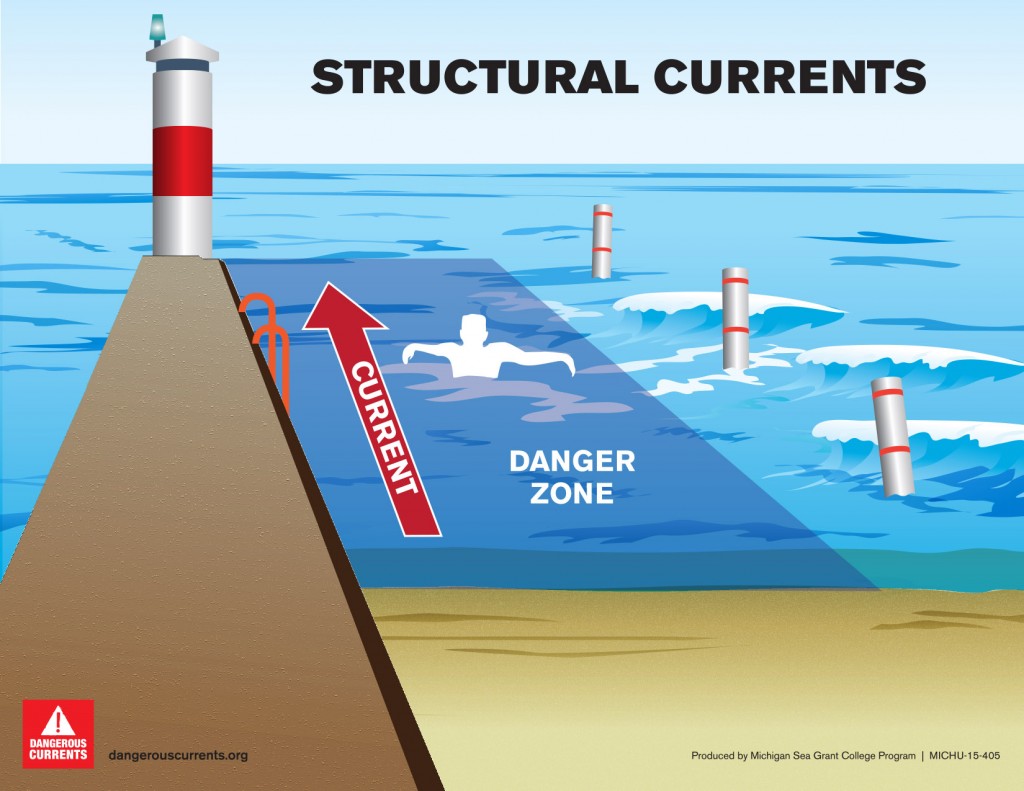Dangerous Currents
What are they and what do you do if you are caught in one?
What is a current?
A current is movement of something towards a certain direction. It can describe the movement of air, eletricity, or water. In this scenario, we are talking about water currents.
What makes them so Dangerous?
Currents can cause waters to move in unexpected directions. This can cause people to be pulled away from safety. Knowing, being able to identify where currents may occur, and knowing how to escape them are life saving skills!
What are the 5 types of currents?
Let's take a deeper dive into what each of these currents mean.
Rip Currents
Rip currents are currents that move away from the shore. They are caused by waves breaking over sandbars in the water. As the water enters the sandbar, the momentum creates a swift current that pulls things away from the shore. In order to escape, follow the current outwards, then swim parallel to the shore until you are out of the current. Then swim back to shore. For more information, check out NOAA's Rip Current Survival Guide here.

Image by Michigan Sea Grant College Program
Outlet Currents
Outlet currents are caused by water flowing out of a lake or river. They create an effect similar to rip currents, therefore escape by swimming parallel to the shore, then back towards the shore once you are out of the current.

Image by Michigan Sea Grant College Program
Longshore Currents
Longshore currents are currents that move parallel to the shore. These can be dangerous since they will pull you away from your initial position. Instead of swimming against the current to get back, swim directly towards the shore, and walk back to your initial location.

Image by Michigan Sea Grant College Program
Structural Currents
Structural currents are currents that are caused by structures like piers, jetties, and groins. When water hits these structures, the water is forced to move in a different direction. This can create a current that moves away from the shore. Avoid swimming near large structures!

Image by Michigan Sea Grant College Program
Channel Currents
Channel currents are caused by large rocks or islands close to shore. This causes a large influx of water, creating a bottleneck between the island and the shore, pulling things in, and then pushing them out. Similar to longshore currents, swim directly towards the shore, and walk back to your initial location.

Image by Michigan Sea Grant College Program
